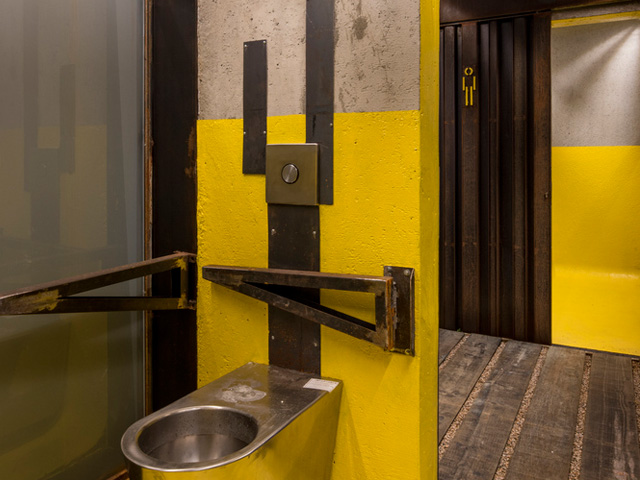THE POWER OF PUBLIC AMENITIES
17 Mar 2020
Having the right amenities along public access trails and open space is often imperative to the success of those places, especially when they’re ecologically sound like this integrated facility in Spain.

Built to service a growing demand for a hiking trail and public recreation space overlooking the Rivers Miño and Deva in O Valiño, Spain, this public facility was also designed to ensure a harmonious existence with the surrounding natural environment.
A polished concrete platform with a raised metal perimeter holds a prefabricated reinforced-concrete module with a bioclimatic exterior of corten steel and glass. Inside, laminated glass on steel frames form the inner walls. The material palette used is not only durable, ensuring longevity for the facility, it was also chosen for its anti-vandalism properties. 
A bioclimatic roof covers the space between male and female amenities, while a small waiting area features a trellis that will bloom with greenery in season, making the wait a little more desirable as well as forming a natural weather break that limits exposure to sun and wind.
According to MOL Arquitectura, the firm responsible for the project, “The basic premise of the intervention is the integration with nature, and the search for a harmonious relationship, but with a certain contrast between the piece to be executed and the environment. It is intended that this small building act as a functional sculptural element.” 
The nature of the skin of the structure is permeable in order facilitate bioclimatic function, which ensures natural ventilation and light, while the angled vestibule cover and facades aid the collection and runoff of rainwater. These architectural considerations make for a facility that receive plenty of light and air and is kept dry, making it not only sanitary but appealing to use for the public. 
Energy-saving LED lighting installed in the facility works with an astronomical clock and a photovoltaic cell to optimise operation, with the aim of making the consumption of the structure less than 100 watts. The lighting not only makes the building safe to use at night, it also operates as a beacon to the recreation area for those traversing the trail network. In addition, the light further highlights the sculptural element of the structure, giving it a ‘lantern element’ visible through the trees at night. 
The no-maintenance choice of construction materials in corten steel, autoclaved treated pine and exposed concrete, which has been treated with expoxy resins, water-repellent coatings and anti-graffiti solutions, gives the facility longevity and reduces costs due to the absence of required maintenance. 
Images Hector Santos-Diez via ArchDaily







